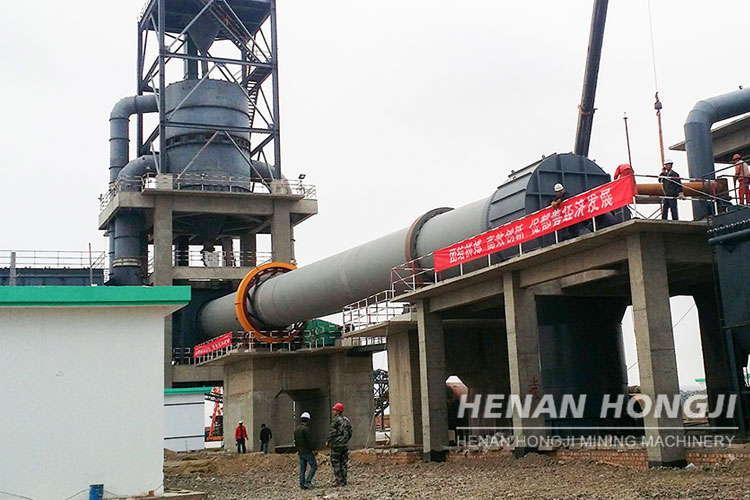Rotary kiln started to be used for lime manufacture at the start of the 20th century and now account for a large proportion of new installations if energy costs are less important.
The early use of simple rotary kilns had the advantages that a much wider range of limestone size could be used, from fines upwards, and undesirable elements such as sulfur can be removed. On the other hand, fuel consumption was relatively high because of poor heat exchange compared with shaft kilns, leading to excessive heat loss in exhaust gases. Old fashioned "long" rotary kilns operate at 7 to 10 MJ/kg. Modern installations partially overcome this disadvantage by adding a preheater, which has the same good solids/gas contact as a shaft kiln, but fuel consumption is still somewhat higher, typically in range of 4.5 to 6 MJ/kg.

In the design shown, a circle of shafts (typically 8–15) is arranged around the kiln riser duct. Hot limestone is discharged from the shafts in sequence, by the action of a hydraulic "pusher plate". Kilns of 1000 tonnes per day output are typical. The rotary kiln is the most flexible of any lime kilns able to produce soft, medium, or hard burned as well as dead-burned lime or dolime.
HONGJI cement rotary kiln can meet 300-6000 t/d cement production line construction requirements, with simple operation, high production production, smooth operation.


.jpg)
